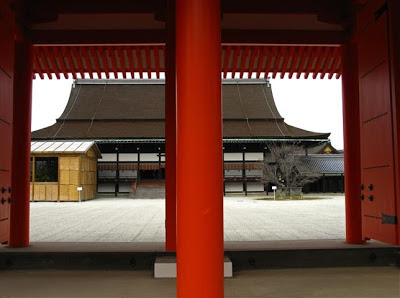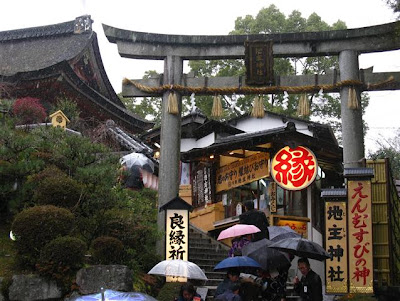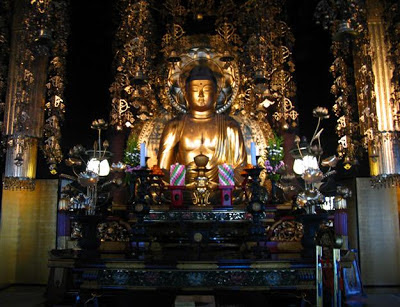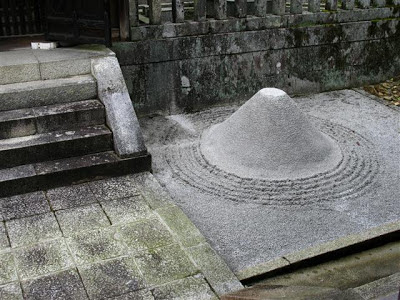Kyoto
was the capital of Japan for over 1000 years (imagine!) until Tokyo
was given that designation in 1869. The present Kyoto Imperial
Palace was used from about 1331 although, like many of the temples
and other wooden structures around here, it was repeatedly destroyed by
fire and then reconstructed, most recently in 1854. (Thankfully the Japanese are persistent and didn't resort to building fireproof but ugly concrete boxes). The palace
compound consists of several buildings which, in addition to their
significance to Japan's cultural heritage, are still used for
ceremonial purposes. We took advantage of one of the twice-daily guided
tours in English to get a peek inside the walls.
One of many grand gates to the Imperial Palace compound
The Shinshinden, the most important building on the palace grounds - which is why they don't allow us to get very close to it.
The royal crest with chrysanthemum incorporated into the facia.
The orange-red color, a derivation of that used in Chinese architecture, is meant to symbolize light and fire. Deborah says she's not sure that's such a good idea given the building's history of burning down.
Cross section showing roof laboriously made from Cypress bark and bamboo pins. It takes 25 years to reroof the palace buildings, and the roofs last 30 years.
The royal couple
Tiger and elephant carving detail on a shrine in the Palace Park.
That's craftsmanship
The Oikeniwa Garden on the Palace grounds.

















































